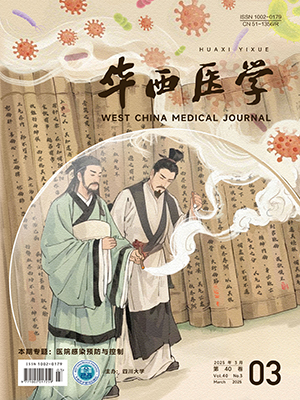| 1. |
张智海, 刘忠厚, 李娜, 等. 中国人骨质疏松症诊断标准专家共识. 中国骨质疏松杂志, 2014, 20(9): 1007-1010.
|
| 2. |
游利. 骨质疏松症的现状、筛查和预防. 中国全科医学, 2016, 19(14): 1616-1619.
|
| 3. |
Xue Y, Liang H, Mbarika V, et al. Investigating the resistance to telemedicine in Ethiopia. Int J Med Inform, 1994, 84(8): 537-547.
|
| 4. |
李静, 陈德才, 王覃. 2016 年《美国内分泌医师协会与美国内分泌协会绝经后骨质疏松症诊疗指南》解读. 中国全科医学, 2017, 20(8): 891-895.
|
| 5. |
Kim KK, Horan ML, Gendler P, et al. Development and evaluation of the Osteoporosis Health Belief Scale. Res Nurs Health, 1991, 14(2): 155-163.
|
| 6. |
Slomian J, Appelboom G, Ethgen O, et al. Can new information and communication technologies help in the management of osteoporosis?. Womens Health (Lond), 2014, 10(3): 229-232.
|
| 7. |
Griffey RT, Shin N, Jones S, et al. The impact of teach-back on comprehension of discharge instructions and satisfaction among emergency patients with limited health literacy: a randomized, controlled study. J Commun Healthc, 2015, 8(1): 10-21.
|
| 8. |
Caplin M, Saunders T. Utilizing teach-back to reinforce patient education: a Step-by-Step approach. Orthop Nurs, 2015, 34(6): 365-368.
|
| 9. |
Peter D, Robinson P, Jordan M, et al. Reducing readmissions using teach-back: enhancing patient and family education. J Nurs Adm, 2015, 45(1): 35-42.
|
| 10. |
Samuels-Kalow M, Hardy E, Rhodes K, et al. " Like a dialogue”: teach-back in the emergency department. Patient Educ Couns, 2016, 99(4): 549-554.
|
| 11. |
Ha Dinh TT, Bonner A, Clark R, et al. The effectiveness of the teach-back method on adherence and self-management in health education for people with chronic disease: a systematic review. JBI Database of System Rev implement Rep, 2016, 14(1): 210-247.
|
| 12. |
Lee RH, Pearson M, Lyles KW, et al. Geographic scope and accessibility of a centralized, electronic consult program for patients with recent fracture. Rural Remote Health, 2016, 16(1): 3440.
|
| 13. |
Cook WL, Khan KM, Bech MH, et al. Post-discharge management following hip fracture--get you back to B4: a parallel group, randomized controlled trial study protocol. BMC Geriatr, 2011, 11: 30.
|
| 14. |
Maddison R, Rawstorn JC, Rolleston A, et al. The remote exercise monitoring trial for exercise-based cardiac rehabilitation (REMOTE-CR): a randomised controlled trial protocol. BMC Public Health, 2014, 14: 1236.
|
| 15. |
Kingston GA, Judd J, Gray MA. The experience of medical and rehabilitation intervention for traumatic hand injuries in rural and remote North Queensland: a qualitative study. Disabil Rehabil, 2015, 37(5): 423-429.
|
| 16. |
Tyagi S, Lim DS, Ho WH, et al. Acceptance of tele-rehabilitation by stroke patients: perceived barriers and facilitators. Arch Phys Med Rehabil, 2018. https://doi.org/10.1016/j.apmr.2018.04.033.
|
| 17. |
王子江, 向川. 骨质疏松症与骨关节炎的相关性研究新进展. 中国骨质疏松杂志, 2014, 20(3): 310-315.
|
| 18. |
漆璇, 王鸥, 付勤, 等. 中国临床医生骨质疏松管理工作现状. 中华骨质疏松和骨矿盐疾病杂志, 2016, 9(2): 110-116.
|
| 19. |
雷云, 李觅琼, 杨芳, 等. 192 例骨质疏松症患者社区门诊与家庭相结合管理效果分析. 上海医药, 2015, 36(8): 50-53.
|
| 20. |
Fontenot HB, Harris AL. Pharmacologic management of osteoporosis. J Obstet Gynecol Neonatal Nurs, 2014, 43(2): 236-245.
|
| 21. |
Baccaro LF, Conde DM, Costa-Paiva L, et al. The epidemiology and management of postmenopausal osteoporosis: a viewpoint from Brazil. Clin Interv Aging, 2015, 10: 583-591.
|
| 22. |
Andreopoulou P, Bockman RS. Management of postmenopausal osteoporosis. Annu Rev Med, 2015, 66: 329-342.
|
| 23. |
Wallace LS, Turner LW, Ballard JE, et al. Evaluation of web-based osteoporosis educational materials. J Womens Health (Larchmt), 2005, 14(10): 936-945.
|
| 24. |
游利. 骨质疏松症社区诊疗管理模式的探索. 上海预防医学, 2017, 29(12): 917-921.
|
| 25. |
陈大军, 谢栋, 马国亮, 等. 基于健康管理平台的中老年骨质疏松症中医定位定性分析与中医药治疗. 华南国防医学杂志, 2017, 31(7): 453-457.
|
| 26. |
韩伟斌, 刘木松, 孙风仙. 社区原发性骨质疏松患者信息化健康管理效果评价. 预防医学情报杂志, 2017, 33(11): 1111-1115.
|
| 27. |
罗展鹏, 马远征, 王亮, 等. 基于数字化平台的持续化骨质疏松健康管理对生活习惯、药物依从性的长期影响. 中国骨质疏松杂志, 2017, 23(3): 337-341.
|
| 28. |
罗展鹏, 王亮, 徐小文, 等. 远程数字化平台对某部干休所骨质疏松症患者的健康管理效果评价. 中国骨质疏松杂志, 2017, 23(6): 778-783.
|
| 29. |
王泽洲, 万和平, 张天晔, 等. 上海市部分社区居民骨质疏松预防知识、自我效能、行为状况及健康宣教效果分析. 上海预防医学, 2017, 29(12): 922-925, 931.
|




